( Header Photo: Court ladies pounding silk from a painting by Emperor Huizong )
The production of silk originated in Neolithic China within the Yangshao culture(4th millennium BCE). Though it would later reach other places in the world, the art of silk production remained confined to China until the Silk Road opened at 114 BC, though China maintained its virtual monopoly over silk production for another thousand years. The use of silk within China was not confined to clothing alone, and silk was used for a number of applications, such as writing. Within clothing, the color of silk worn also held social importance, and formed an important guide ofsocial classduring the Tang dynasty.
Chinese silk-making process (Drawing from "Sericulture" by Liang Kai, 1200s)
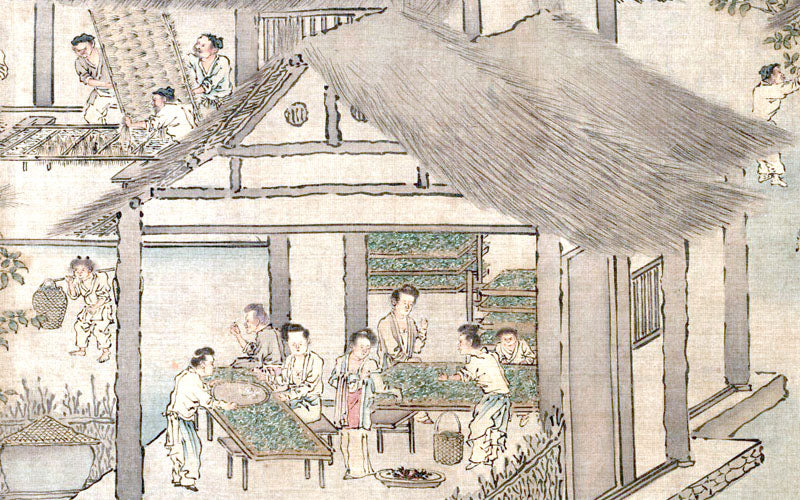
1. The silkworms and mulberry leaves are placed on trays by women.
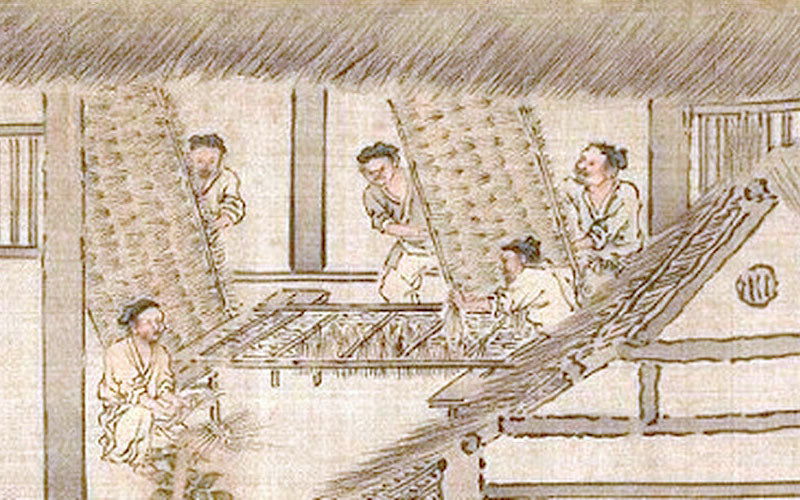
2. Twig frames for the silkworms are prepared by men.
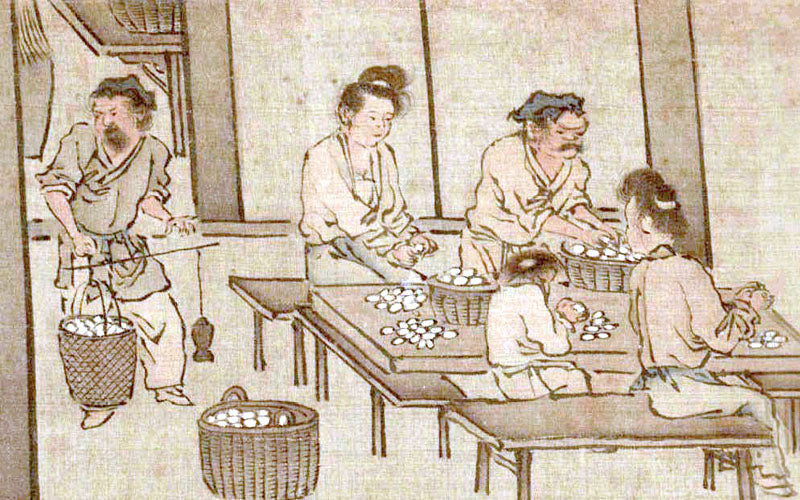
3. The cocoons are weighed and sorted.
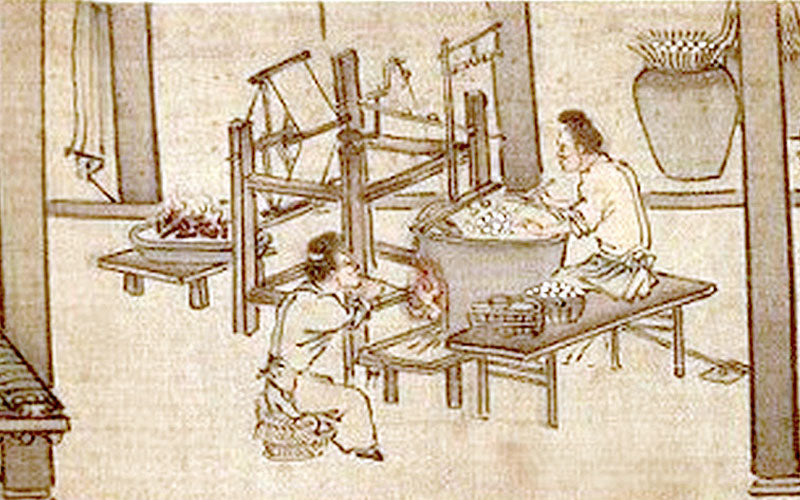
4.The cocoons are soaked and the silk is wound on spools.
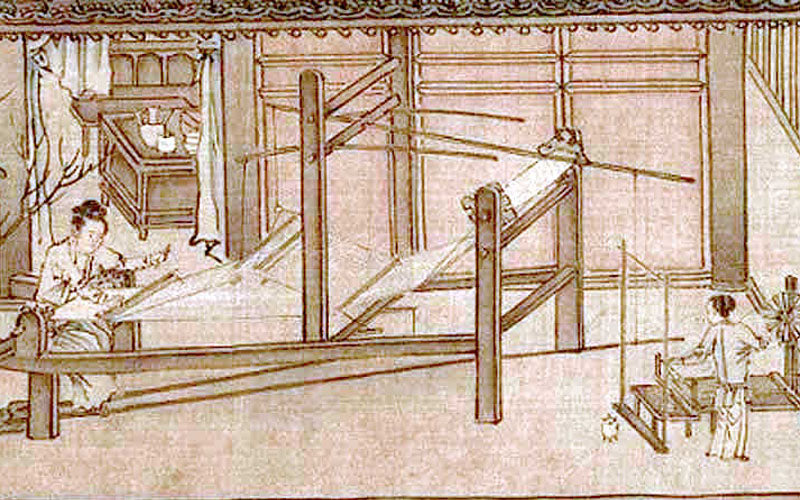
5.The silk is woven using a loom.

Silk cultivation spread to Japan around 300 AD, and, by 552 AD, the Byzantine Empire managed to obtain silkworm eggs and were able to begin silkworm cultivation; the Arabs also began to manufacture silk at the same time. As a result of the spread of sericulture, Chinese silk exports became less important, although they still maintained dominance over the luxury silk market. The Crusades brought silk production to Western Europe, in particular to many Italian states, which saw an economic boom exporting silk to the rest of Europe. Developments in manufacturing technique also began to take place during the Middle Ages (5th to 15th centuries) in Europe, with devices such as the spinning wheel first appearing at this time. During the 16th century, France joined Italy in developing a successful silk trade, though the efforts of most other nations to develop a silk industry of their own were unsuccessful.
Spread of the silk culture(image sources and attribution link in page below)
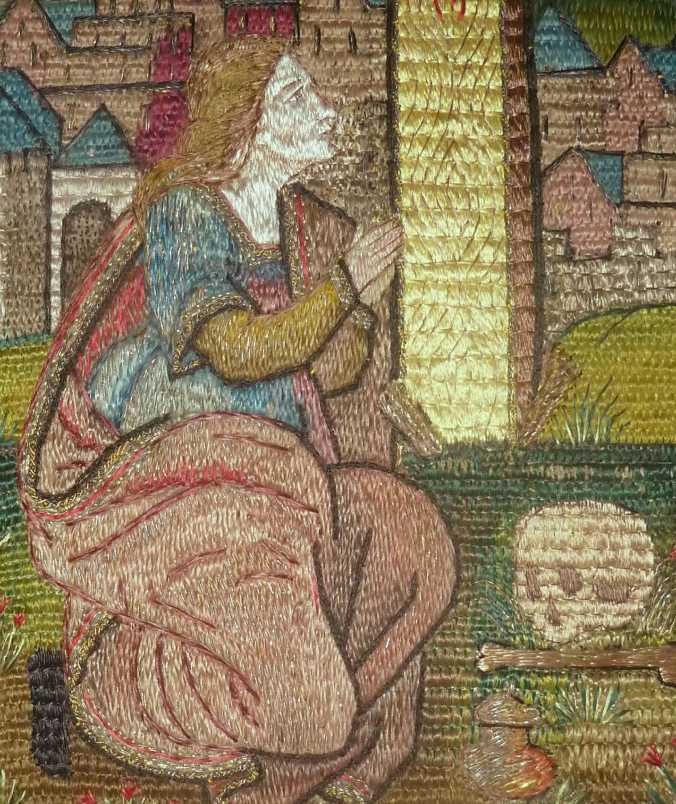
Polychrome embroidery in silk, 17th century, Antwerp.
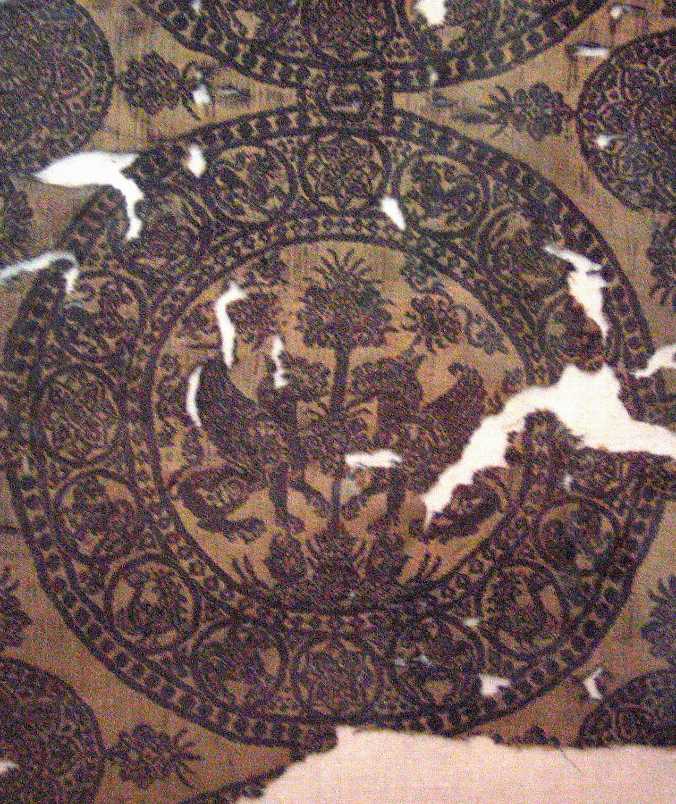
Sassanid Inspired two-sided silk cloth, with winged lions tree of life, from the early Islamic period in Iran, National Museum of Iran.
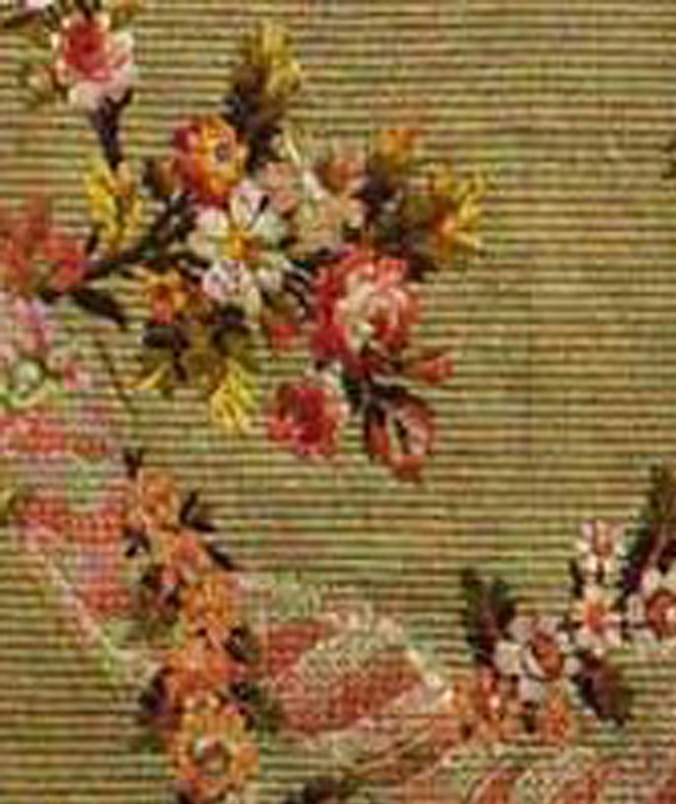
French silk brocade - Lyon 1760–1770
The Industrial Revolution changed much of Europe's silk industry. Due to innovations in the spinning of cotton, cotton became much cheaper to manufacture, leading to cotton production becoming the main focus for many manufacturers, and causing the more costly production of silk to shrink. New weaving technologies, however, increased the efficiency of producing silk cloth; among these was the Jacquard loom, developed for the production of highly detailed silks with embroidery-like designs. An epidemic of several silkworm diseases at this time caused production to fall, especially in France, where the industry never fully recovered.
In the 20th century, Japan and China regained their earlier dominant role in silk production, and China is now once again the world's largest producer of silk. The rise of new imitation silk fabrics, such as nylon and polyester, has reduced the prevalence of silk throughout the world, being a cheaper alternative. Silk is now once again thought of as a luxury good, with a greatly reduced importance compared to its historical heyday.
Comparison of Silk, Satin, and Cotton
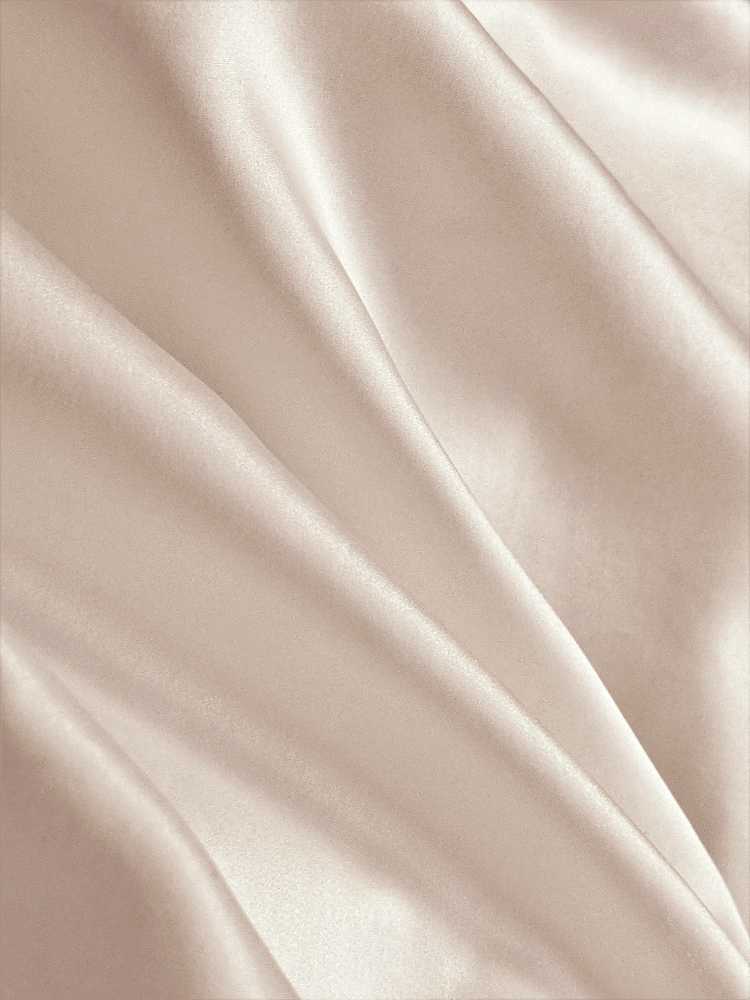
Silk
Silk fabric is made from a natural protein fiber produced from silkworms, popularly mulberry silk.
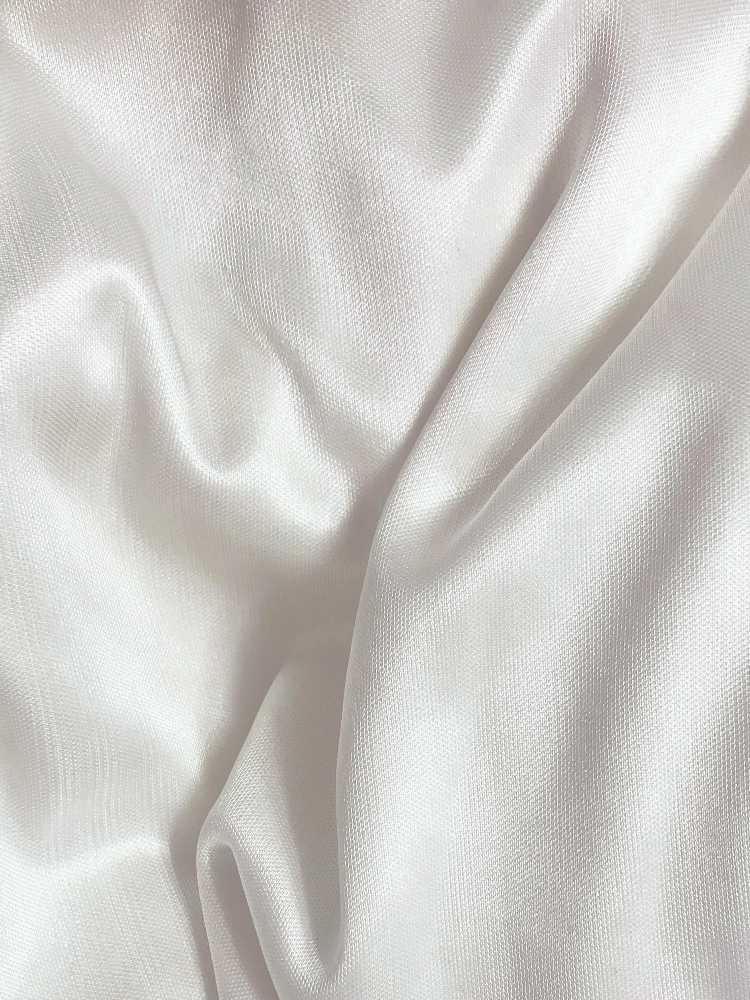
Satin
Satin is a man-made material made up of a mixture of satin, nylon, and polyester.
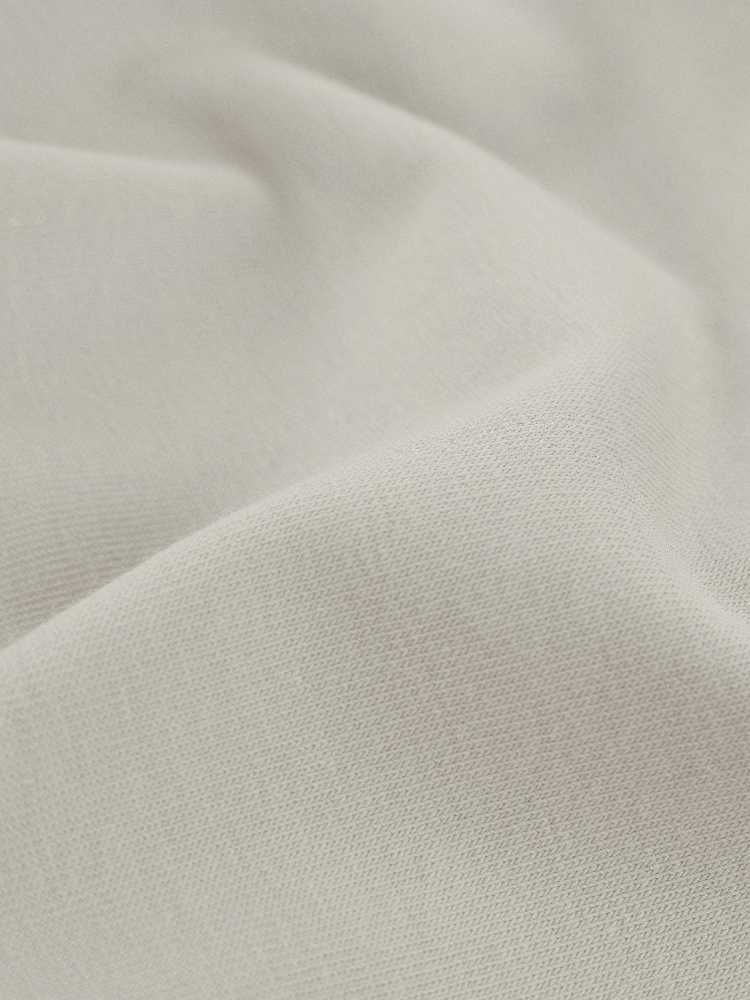
Cotton
Cotton fabric is made from natural plant fiber around the seeds of the cotton plants
However, the story of silk did not just end there. With the advent of the 21st century, and the improvement of people's living standards, the standard of purchase is no longer dominated by cheap prices, but more and more tends to be high-quality, healthy, and environmentally friendly... With the advancement of productivity and production technology, the price of luxury fabrics such as silk no longer involves great expense. With its unique quality and strength, silk fabric once again gloriously reappeared on the stage of history.
● Text "History of silk". Mainly From Wikipedia, the free encyclopedia, CC 3.0 https://en.wikipedia.org/wiki/History_of_silk
●Image "Court ladies pounding silk"By Emperor Huizong of Song - The Yorck Project (2002) 10.000 Meisterwerke der Malerei (DVD-ROM), distributed by DIRECTMEDIA Publishing GmbH. ISBN: 3936122202.Museum of Fine Arts, online collection, Public Domain, https://commons.wikimedia.org/w/index.php?curid=153058
●Images "Chinese silk making process" By Attributed to Liang Kai - Cleveland Museum of Art, online collection"The Song Economic Revolution: Textiles and Silk". Asia for Educators. Columbia University., Public Domain, https://commons.wikimedia.org/w/index.php?curid=37332020
●Image "Polychrome embroidery in silk, 17th century, Antwerp". By Carolus - Own work, CC BY 4.0, https://commons.wikimedia.org/w/index.php?curid=40805980
●Image "Thr muze art islam 4". By personal picture, author: Fabienkhan (talk · contribs), date: 2006-04, CC BY-SA 2.5, https://commons.wikimedia.org/w/index.php?curid=849311
●Image"French silk brocade - Lyon 1760–1770".By The original uploader was Yelkrokoyade at French Wikipedia. - Transferred from fr.wikipedia to Commons. Taken from http://www.anniecicatelli.com/brocart.htm, CC BY-SA 3.0, https://commons.wikimedia.org/w/index.php?curid=2057205
The text and images on this page mainly originate from Wikipedia, and the purpose is only to spread knowledge and culture. If you are the licensor and consider there is any copyright problem, please contact us and we will take care immediately.






